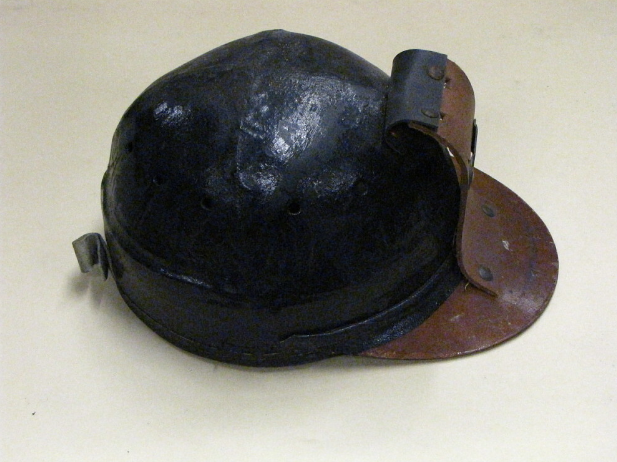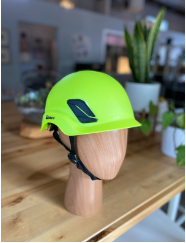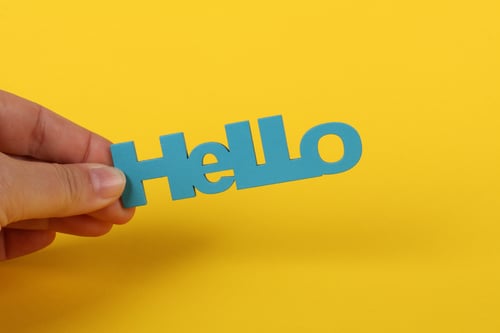Heads Up!
PROTECTING NOGGINS ON THE JOB
Goodbye, hard hats. Hello, safety helmets.
Ah, hard hats. The stalwart defenders of countless noggins everywhere. Protection reigns supreme in a world where our brains are the most important tool. Hard hats are symbols of safety and professionalism across many industries and serve as an enduring symbol of care and concern in the workplace.
Hard hats are so common these days—more than six million are sold yearly—that we rarely consider where they came from. To see how far we've come, though, we need to know how it all started.
THE REMARKABLE EVOLUTION OF HARD HATS
One of the oldest protective hats ever found was from Greece's Bronze Age (around the 17th century BCE). It was made by attaching slices of ivory to a leather cap and was absolute garbage at protecting the wearer from injury.
Fast forward a few thousand years to the early 1900s when hard hats as we know them today began to take shape. During World War I, helmets protected the military forces from bullets, shrapnel, and flying debris. Edward W. Bullard, a young US Army lieutenant, witnessed the effectiveness of these wartime helmets and realized their potential in the workplace. In 1919, he created the Hard Boiled Hat, forever changing the building and construction industry.

Made with heavy layers of duck canvas, the Hard Boiled Hat used steam to form the hat to a person's head. Once dry, it was painted black and slathered in shellac to give it durability and strength. The new-fangled hat was a $3 luxury that workers—mostly miners at the beginning— had to buy themselves.
Canvas offered rudimentary-at-best safeguarding against falling debris. As America embraced the boom of industrialization and construction projects—such as the Hoover Dam and the Golden Gate Bridge—grew in complexity, so did the demand for sturdier headgear. Bullard soon created new versions of the hard hat adapted for different uses and invented an inner suspension system that distributed the force of an impact.
From canvas to plastic to fiberglass, hard hats have come a long way since dipping them in glue and hoping for the best. As America strides into the future, hard hats continue to evolve and adapt to changing needs.
THE RISE OF SAFETY HELMETS
When it comes to workplace safety, OSHA has played a crucial role in shaping the evolution of head protection gears and setting standards to protect workers. It began issuing hard hat guidelines during the 1970s by mandating employers provide workers with appropriate head protection to prevent injuries from falling objects or other hazards.
In the early days of OSHA, hard hats were the go-to protective headgear for workers in industries such as construction and manufacturing. While they effectively safeguarded workers, the hats often lacked comfort and style, leading to a search for improved alternatives.
Recently, hard hats have undergone significant advancements, and safety helmets have emerged as a modern solution for protection at a higher level. Lightweight materials, improved ventilation systems, and adjustable straps have made them more comfortable and practical for workers. Many safety helmets incorporate features such as built-in visors to protect against flying debris or harmful UV rays. Some even come equipped with integrated communication systems for efficient and secure workplace communication.

A SAFETY HELMET WILL HAVE YOUR BACK…ER, HEAD
- New safety helmets protect the top and sides of the head from impact (because worksite hazards come from all directions)
- Integrated chin straps keep the helmet on your head
- Safety helmets offer a tighter, more personalized fit.
BUILDING A SAFER FUTURE
There is a current push to transition the construction and manufacturing industries to this new style of safety helmet for the increased safety and comfort of workers. Although OSHA regulations do not yet mandate safety helmets, they're coming. OSHA's new pilot program requires inspectors to wear the new helmets, and a growing number of contractors are making the transition from hard hats to safety helmets as an investment in workplace safety. Movement is afoot on a Z89.1 revision from OSHA to be published in 2024 as OSHA continues to play a vital role in ensuring a safer work environment for all.
Yes, the transition to safety helmets will require a more significant up-front investment. But over the long term, employers are proactively protecting their workforce from serious injury. And in the world of construction and manufacturing, safety is the foundation for everything.
Buzztag can evolve your brand with a customized safety helmet that meets rigorous industry standards and incorporates style, comfort, and cutting-edge features. Reach out today to schedule time with Brenda at Buzztag for more information and a complimentary digital mock-up that showcases your brand and its commitment to a safer future.




